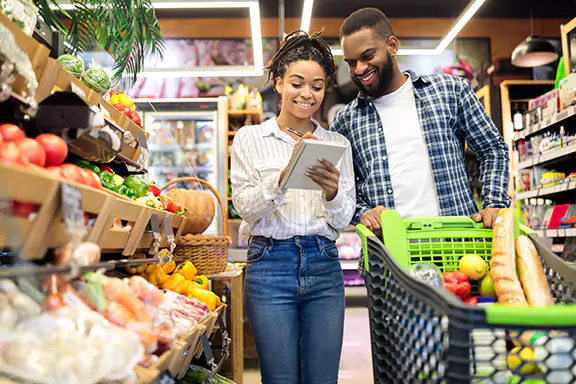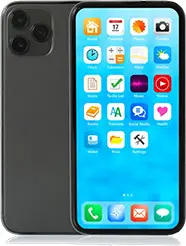Grocery shopping on a budget for two can be a challenge, especially when you’re trying to eat healthy and save money. Whether you’re a couple, roommates, or just two people sharing a household, smart grocery shopping is essential to keep your grocery bill under control. By planning your meals, creating a detailed grocery list, and using some savvy shopping strategies, you can enjoy delicious meals without breaking the bank.
We’ll cover practical tips and strategies to help you master grocery shopping on a budget for two, making every dollar you shop with count and ensuring you get the most out of your grocery budget.
How to Calculate Your Grocery Budget
Setting a realistic grocery budget is the first step to successful grocery shopping on a budget for two. A grocery budget helps you manage your monthly expenses and ensures you don’t overspend on groceries. Here’s how to get started:
1. Determine Your Total Monthly Income
Begin by calculating your total monthly income. This includes your salary, any extra income from side jobs, and any other sources of money coming in. Knowing your total income helps you allocate funds to different expenses, including your grocery budget.
2. Assess Your Monthly Expenses
Next, list all your monthly expenses. This includes fixed costs like rent or mortgage payments, utility bills, transportation costs, and any debt payments. Don’t forget to include discretionary spending, such as entertainment, dining out, and other non-essential expenses. By understanding your overall spending, you can determine how much you can realistically allocate to groceries.
3. Set a Grocery Budget
Based on your income and expenses, set a specific amount for your grocery budget. The average grocery bill for two people can range from $300 to $500 per month, depending on your location and shopping habits. Aim to keep your grocery budget within this range to manage your family finances effectively.
4. Plan Your Meals
Meal planning is a crucial part of sticking to your grocery budget. Plan your meals for the week or month, focusing on affordable ingredients and recipes that use similar items to minimize waste. Include a mix of fresh produce, store brands, and bulk items to keep costs low while maintaining a healthy diet.
Strategies for In-Store Grocery Shopping on a Budget
Mastering grocery shopping on a budget to cook for two involves using a variety of strategies to keep costs low while still enjoying tasty and nutritious meals. Here are some effective tips to help you make the most of your grocery budget:
1. Create a Grocery List Before You Leave the House
A well-organized grocery list is essential for sticking to your budget. Before you head to the grocery store, write down all the ingredients you need for your planned meals. Stick to this list to avoid impulse buys that can quickly add up. Group items by category (e.g., produce, dairy products, canned goods) to make your grocery shopping list and trip more efficient. This helps you save time and stay focused on your budget.
2. Buy Store Brands
Choosing store brands over name brands is an easy way to cut costs without sacrificing quality. Store brand products are often just as good as their more expensive counterparts but cost significantly less. Compare prices per ounce or unit to ensure you’re getting the best deal.
4. Use Coupons and Loyalty Programs
Take advantage of digital coupons and grocery store loyalty programs to save even more money. Many grocery stores offer digital coupons that you can load onto your loyalty card or app. These coupons can provide discounts on various grocery items, from fresh produce to dairy products and more. Joining a store’s loyalty program can also earn you points on your purchases, which can be redeemed for discounts or free items later.
5. Shop in Bulk
Buying in bulk is a smart move for non-perishable items and ingredients you use frequently. Items like dried beans, rice, pasta, and canned goods often cost less per unit when purchased in larger quantities. Just make sure you have enough storage space to keep these items fresh. Bulk buying also works well for meats like ground beef or chicken breasts, which you can portion out and freeze for later use.
6. Buy In-Season Produce
In-season produce is usually cheaper and fresher than out-of-season options. Plan your meals around fruits and vegetables that are currently in season to get the best prices and quality.
For example, buy bell peppers, carrots, and fresh spinach when they are abundant and affordable. Frozen fruits and vegetables are also good alternatives when fresh produce is out of season.
7. Cooking at Home
Cooking at home is one of the most effective ways to save money. Preparing meals from scratch allows you to control the ingredients and portion sizes, reducing the cost per meal. Plus, cooking at home can be healthier than eating out, as you can avoid empty calories and tailor meals to your dietary needs.
8. Reduce Food Waste
Reducing food waste is key to saving money and stretching your grocery budget. Properly store fresh produce, dairy products, and other perishables to extend their shelf life. Use leftovers creatively in new meals to avoid throwing away food.

Utilizing Government Assistance Programs
If you’re finding it difficult to stick to your grocery budget, government assistance programs can provide valuable support. The Supplemental Nutrition Assistance Program (SNAP) is designed to help low-income individuals and families afford nutritious food. Here’s how to make the most of these programs:
Supplemental Nutrition Assistance Program Benefits (SNAP)
SNAP provides monthly benefits that can be used to buy food at authorized retail stores. These benefits are loaded onto an Electronic Benefits Transfer (EBT) card, which works like a debit card. You can use SNAP benefits to purchase a wide variety of foods, including fresh fruits, vegetables, meat, dairy products, bread, and cereals.
What You Can Buy with SNAP
SNAP benefits can be used to buy:
Fresh fruit and vegetables
Meat, poultry, and fish
Dairy products
Breads and cereals
Seeds and plants that produce food for the household to eat
What You Cannot Buy with SNAP
SNAP benefits cannot be used to buy:
Alcoholic beverages
Tobacco products
Vitamins, medicines, and supplements
Non-food items like pet food, soaps, and paper products
Prepared foods that are meant to be eaten in the store
Knowing what you can and cannot buy with SNAP helps you make better choices when grocery shopping.
Finding Participating Grocery Stores
To find grocery stores that accept SNAP benefits, use the SNAP Retailer Locator. This tool allows you to search for authorized retailers in your area, ensuring that you can use your benefits to grocery shop where they are accepted.
Applying for SNAP
If you think you might be eligible for SNAP, you can apply online through your state’s SNAP website or visit a local SNAP office. The application process typically requires information about your income, expenses, and household size. Once approved, you’ll receive an EBT card that you can use to buy groceries.
The Lifeline Program: FREE Cell Phone Service with EASY Wireless
EASY Wireless provides free MONTHLY cell phone and data services to those who qualify for the federal Lifeline Program through participation in assistance programs like SNAP.
This is especially helpful for accessing digital coupons, ordering groceries online, and managing your SNAP benefits. Staying connected can help you make the most of your resources and ensure you never miss out on great deals and essential services.
Click to see if you’re eligible for FREE Cell Phone Service from EASY Wireless.
Start Saving on Your Grocery Bill Today
By using these tips and resources, you can make the most of your grocery budget and ensure you and your household enjoy healthy, affordable meals. Remember, smart shopping is all about planning, prioritizing, and making informed choices. Happy grocery shopping!


